
Groombridge Place, the real-life counterpart of what Doyle called “Birlstone”.
The other night I was re-reading an old mystery from the 1930s and muttered to myself, “Oh, pfui, this is the Birlstone gambit.” A family member in the room, who is probably accustomed to me talking to myself, said, “Huh? What’s the Birlstone gambit?” And so a conversation was born, and hence this post.
I’m afraid before I start I must go much, much further than my usual spoiler warning. Ordinarily I warn people about my discussion of a specific book because they may spoil their enjoyment of the book if they haven’t read it yet. Here, I’m going to be discussing the patterns of plots of Golden Age mysteries — various structures that underlie certain mysteries that are not related to each other but which repeat as what I’ll call “gambits”. Gambits are related to “types” of mysteries, like “locked room” or “Had I But Known”, but they relate more to the way in which the plots are constructed. You’ll understand more as you get into it. The point is, if you keep reading, you’re going to be better able to recognize certain repeating structures of murder mysteries regardless of who wrote them or when they were written.
I will be revealing the solution of certain well-known mysteries that either originated these gambits or are famous for having used them. If you are well-read in detective fiction, you will already be familiar with the solution to, say, Agatha Christie’s The Murder of Roger Ackroyd. But if not, your enjoyment will be spoiled irreparably. Really I only mean this post for the enjoyment of very well read mystery fans; be aware, and please be prepared to pass on to other reading if there’s a possibility I’ll spoil your enjoyment.
Here, alphabetically by author (so that there will be no chance of you making an accurate guess based on proximity) are the novels that will specifically be spoiled for you by reading the following article.
- Blake, Nicholas: The Beast Must Die (1938)
- Brand, Christianna: Tour de Force (1955)
- Carr, John Dickson: The Sleeping Sphinx (1947)
- Christie, Agatha: After the Funeral (1953)
- Christie, Agatha: Death on the Nile (1937)
- Christie, Agatha: Hallowe’en Party (1969)
- Christie, Agatha: Peril at End House (1932)
- Christie, Agatha: The Hollow (1946)
- Christie, Agatha: The Murder of Roger Ackroyd (1926)
- Dickson, Carter (John Dickson Carr): The Plague Court Murders (1934)
- Dickson, Carter (John Dickson Carr): The Red Widow Murders (1935)
- Doyle, Arthur Conan: The Valley of Fear (1915)
- Flynn, Gillian: Gone Girl (2012)
- Hawkins, Paula: The Girl on the Train (2015)
- Lorac, E.C.R.: Still Waters (1949)
- Scooby-Doo, Where Are You? (1969-1970) et seq.
- Van Dine, S. S.: The Kennel Murder Case (1933)
- Wentworth, Patricia: The Catherine Wheel (1949)
- Wentworth, Patricia: The Chinese Shawl (1943)
- Wentworth, Patricia: The Silent Pool (1954)
The nomenclature I’ve used to label these gambits is not necessarily the earliest such example, or the best, or the best-written. Frankly, it’s just how I have personally come to think of them over the years; a kind of mental shorthand, if you will. You will not find many of these gambits so labeled anywhere else. If it makes you happier to think of these ideas as tropes or even cliches, feel free. Does it seem like half of them were invented by Agatha Christie? Well, that’s why she was a great mystery novelist.
The Birlstone Gambit
 In this gambit, A is found dead and B is a suspect. A has died in such a way as to render the body unrecognizable; B frequently provides corroborating evidence as to the identity of the corpse. The corpse, however, is actually that of B, and A has taken his place at the time of death. The gambit probably originated with Sir Arthur Conan Doyle in The Valley of Fear (1915), or at least he made it his own; this has henceforth been known as the Birlstone Gambit, after Birlstone Manor House, the scene of the action in that novel. I like the way it was handled by Christianna Brand in Tour de Force (1955).
In this gambit, A is found dead and B is a suspect. A has died in such a way as to render the body unrecognizable; B frequently provides corroborating evidence as to the identity of the corpse. The corpse, however, is actually that of B, and A has taken his place at the time of death. The gambit probably originated with Sir Arthur Conan Doyle in The Valley of Fear (1915), or at least he made it his own; this has henceforth been known as the Birlstone Gambit, after Birlstone Manor House, the scene of the action in that novel. I like the way it was handled by Christianna Brand in Tour de Force (1955).
Recognizing this gambit: B sometimes displays an odd lack of knowledge of the details of B’s life, or alternatively knows too much about the details of A’s life. It’s usually cast such that B is better placed (wealthier, happier) than A, and there’s a strong motivation for A to disappear.
The Lion’s Mouth Gambit
 A decides to murder B; A creates a situation where it looks as though someone is trying to kill A. After a few faked attempts on A, B is murdered by A, apparently by someone trying to kill A. Sometimes A continues to fake attempts on his own life to convince detectives that B was killed in error for A; sometimes A puts his hand in the lion’s mouth and makes a great show of hiring a detective to identify the killer of B. To my mind this was best handled in Agatha Christie’s Peril at End House in 1932.
A decides to murder B; A creates a situation where it looks as though someone is trying to kill A. After a few faked attempts on A, B is murdered by A, apparently by someone trying to kill A. Sometimes A continues to fake attempts on his own life to convince detectives that B was killed in error for A; sometimes A puts his hand in the lion’s mouth and makes a great show of hiring a detective to identify the killer of B. To my mind this was best handled in Agatha Christie’s Peril at End House in 1932.
Recognizing this gambit: A usually benefits a great deal by the death of B, to A’s mock surprise.
The Distinctive Garment Gambit
 This is rather similar to the Lion’s Mouth Gambit. There are two similar patterns to this one. In one, A decides to kill B. There’s a distinctive garment that is associated with A, and B is found dead wearing that garment. A has killed B, and it’s assumed that B was killed by someone who thought they were killing A. In the main variant, the actual murderer is C; A provides the garment to B unbeknownst to C, and C actually does make a mistake and kills B, having mistaken B for A.
This is rather similar to the Lion’s Mouth Gambit. There are two similar patterns to this one. In one, A decides to kill B. There’s a distinctive garment that is associated with A, and B is found dead wearing that garment. A has killed B, and it’s assumed that B was killed by someone who thought they were killing A. In the main variant, the actual murderer is C; A provides the garment to B unbeknownst to C, and C actually does make a mistake and kills B, having mistaken B for A.
In Christie’s Peril At End House in 1932, the garment is a shawl; it’s also a shawl in Patricia Wentworth’s The Chinese Shawl (1943) and in her The Silent Pool (1954) it’s a coat with a pattern of huge checks in vivid colour.
Recognizing this gambit: The minute you hear of a distinctive garment (for men, it can be a hat) you should be listening for people who want to wear it; they’re about to die.
The Most Likely is Least Likely is Most Likely Gambit
 This gambit was a specialty of the great Anthony Berkeley. Essentially, A has a strong motive to kill B. When B’s corpse is found, A is in such a position that the blood is literally dripping from his hands. The experienced reader knows that the most likely suspect is always the least likely suspect, and that there is some X out there who has set this up. The VERY experienced reader knows that when someone is the least likely suspect, they are the most likely suspect; A looks as guilty as possible because they’re actually guilty. My favourite of these is Agatha Christie’s The Hollow (1946) but she also worked a variant of this in 1937’s Death on the Nile. Berkeley’s variants are frequently arranged so that the most likely suspect is, after much investigation by Roger Sheringham, ultimately found to be the killer and hasn’t set anything up at all.
This gambit was a specialty of the great Anthony Berkeley. Essentially, A has a strong motive to kill B. When B’s corpse is found, A is in such a position that the blood is literally dripping from his hands. The experienced reader knows that the most likely suspect is always the least likely suspect, and that there is some X out there who has set this up. The VERY experienced reader knows that when someone is the least likely suspect, they are the most likely suspect; A looks as guilty as possible because they’re actually guilty. My favourite of these is Agatha Christie’s The Hollow (1946) but she also worked a variant of this in 1937’s Death on the Nile. Berkeley’s variants are frequently arranged so that the most likely suspect is, after much investigation by Roger Sheringham, ultimately found to be the killer and hasn’t set anything up at all.
Recognizing this gambit: When A points out, midway through the murder investigation, that had he wanted to kill B, he could easily have done it in a much less obvious way and escape detection, you should pay close attention.
The Complicit Victim Gambit
 In this gambit, A wishes to kill B. A creates a situation such that, unbeknownst to anyone except A and B, the two arrange a plot so that B will be able to, for instance, kill C with the assistance (alibi, etc.) of A. But halfway through the plot, A kills B (which was A’s plan all along) and, because B has helped to arrange the circumstances of his own death, A hopes to escape detection through impossibility. I like the way this was handled by John Dickson Carr (as by Carter Dickson) in The Red Widow Murders (1935) but there are many other examples.
In this gambit, A wishes to kill B. A creates a situation such that, unbeknownst to anyone except A and B, the two arrange a plot so that B will be able to, for instance, kill C with the assistance (alibi, etc.) of A. But halfway through the plot, A kills B (which was A’s plan all along) and, because B has helped to arrange the circumstances of his own death, A hopes to escape detection through impossibility. I like the way this was handled by John Dickson Carr (as by Carter Dickson) in The Red Widow Murders (1935) but there are many other examples.
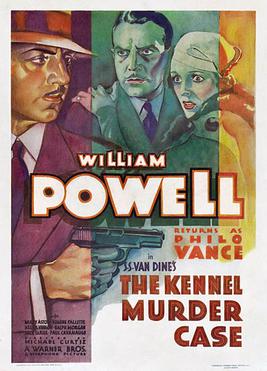 Sometimes the assistance of B in his own death is accidental. There’s a sub-gambit of this that I’ve given its own name: the Elizabeth of Austria Gambit. In 1898, that noble lady was stabbed by an anarchist with a thin blade, and managed to walk unassisted to her cabin on a boat, where she died. I use this to stand for the cases where A kills B and then, unbeknownst to A, B continues to move around and lock himself into rooms and the like, and muddies up the path to A’s having murdered him. Principal among these is S. S. Van Dine’s The Kennel Murder Case (1933).
Sometimes the assistance of B in his own death is accidental. There’s a sub-gambit of this that I’ve given its own name: the Elizabeth of Austria Gambit. In 1898, that noble lady was stabbed by an anarchist with a thin blade, and managed to walk unassisted to her cabin on a boat, where she died. I use this to stand for the cases where A kills B and then, unbeknownst to A, B continues to move around and lock himself into rooms and the like, and muddies up the path to A’s having murdered him. Principal among these is S. S. Van Dine’s The Kennel Murder Case (1933).
Recognizing this gambit: you have to recognize that the plot is quite simple if the deceased person has cooperated cheerfully in setting the scene of their own demise, and then figure out who might have convinced them to do that.
The Somebody Else’s Problem Gambit
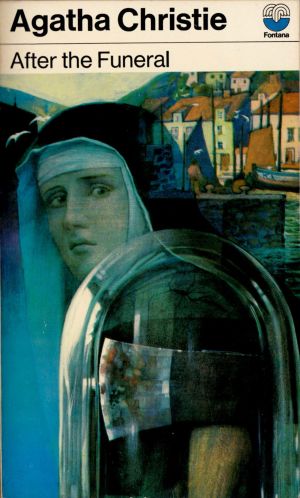 Back in the 1980s, the late mystery novelist Greg Kramer and I used to earn small sums by writing and producing live murder mystery games over the course of a Saturday in Vancouver, culminating in a banquet in which All Was Revealed. (And may I add here that actor Curtis Armstrong, who played a supporting role in Moonlighting, is the finest real-life detective we ever encountered; a natural-born Sherlock.) There’s probably a novel or two based on the crazy stories Greg and I created for those games, but one gambit that we used over and over was a character to whom we referred as the SEP, or Somebody Else’s Problem.
Back in the 1980s, the late mystery novelist Greg Kramer and I used to earn small sums by writing and producing live murder mystery games over the course of a Saturday in Vancouver, culminating in a banquet in which All Was Revealed. (And may I add here that actor Curtis Armstrong, who played a supporting role in Moonlighting, is the finest real-life detective we ever encountered; a natural-born Sherlock.) There’s probably a novel or two based on the crazy stories Greg and I created for those games, but one gambit that we used over and over was a character to whom we referred as the SEP, or Somebody Else’s Problem.
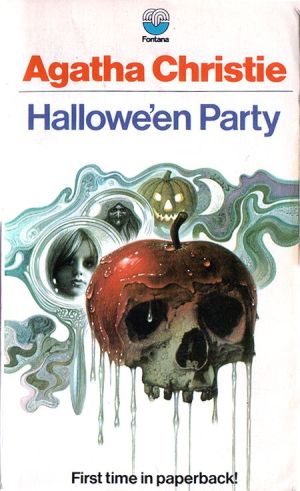 Essentially we gave a single character a crucial fact and told the actor to conceal it by being annoying. A woman with a high squeaky voice who wanted to tell you the details of her recent encounter with aliens; an elderly man with a severe drinking problem and a failed marriage who wanted sympathy. Most of the players weren’t prepared to put in the work to dig that crucial fact out of such an annoying person and tended to encourage their teammates to do so, with greater or lesser success. But you couldn’t solve the case without getting that little fact possessed only by the SEP.
Essentially we gave a single character a crucial fact and told the actor to conceal it by being annoying. A woman with a high squeaky voice who wanted to tell you the details of her recent encounter with aliens; an elderly man with a severe drinking problem and a failed marriage who wanted sympathy. Most of the players weren’t prepared to put in the work to dig that crucial fact out of such an annoying person and tended to encourage their teammates to do so, with greater or lesser success. But you couldn’t solve the case without getting that little fact possessed only by the SEP.
In mysteries in the print medium, this is a more difficult element to maintain; it’s usually done by creating a character whom no one believes or whose evidence is “clearly” incorrect. Agatha Christie did this best, I think, in 1953’s After the Funeral but also in 1969’s Hallowe’en Party.
Recognizing this gambit: when a character is either so grating that you don’t want to read about them, or you’ve become convinced that their evidence is unreliable, that’s the person who knows what actually happened, if you can only dig it out of them.
The Unreliable Narrator Gambit
 Just lately, this has become a big thing in the literary world with the huge success of Paula Hawkins’ 2015 debut novel, The Girl on the Train and 2014’s Gone Girl by Gillian Flynn. Essentially the protagonist represents a situation to be a certain way in the earlier part of the book and then, over the course of the action, reveals that she’s been “lying” to the audience and the truth is quite different. Successful films were made from both these books and seem to have spawned a spate of imitators.
Just lately, this has become a big thing in the literary world with the huge success of Paula Hawkins’ 2015 debut novel, The Girl on the Train and 2014’s Gone Girl by Gillian Flynn. Essentially the protagonist represents a situation to be a certain way in the earlier part of the book and then, over the course of the action, reveals that she’s been “lying” to the audience and the truth is quite different. Successful films were made from both these books and seem to have spawned a spate of imitators.
 In GAD, of course, this concept is represented by the magnificent novel by Agatha Christie, The Murder of Roger Ackroyd (1926) and the equally clever The Beast Must Die by Nicholas Blake (1938).
In GAD, of course, this concept is represented by the magnificent novel by Agatha Christie, The Murder of Roger Ackroyd (1926) and the equally clever The Beast Must Die by Nicholas Blake (1938).
Recognizing this gambit is very difficult. Essentially you have to mistrust what you are reading from the very beginning and always have the potential for an unreliable narrator in your mind. If the narrator says something that seems to gloss over an essential fact — “I did what little had to be done” — focus in on that.
The Scooby-Doo Gambit

 A situation is outlined that contains a supernatural or creepy element; something that tends to keep people away from a certain building, or area, or room. It might be the rumour of a ghost or other monster. Upon investigation, it turns out that the supernatural element has been deliberately falsified and bolstered so as to keep people away from a criminal activity. “And I would have gotten away with it too, if it hadn’t been
A situation is outlined that contains a supernatural or creepy element; something that tends to keep people away from a certain building, or area, or room. It might be the rumour of a ghost or other monster. Upon investigation, it turns out that the supernatural element has been deliberately falsified and bolstered so as to keep people away from a criminal activity. “And I would have gotten away with it too, if it hadn’t been
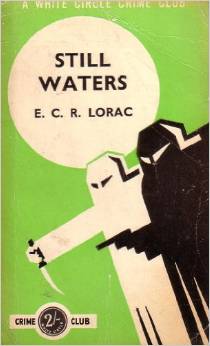 for you meddling kids!” In other words, every single episode of the cartoon Scooby-Doo, Where Are You? and its sequelae, but also many different novels by writers like John Dickson Carr (many times, but I like 1934’s The Plague Court Murders and 1947’s The Sleeping Sphinx). Carr had a stronger emphasis on the supernatural; other practitioners created less spooky and more outright threatening situations to cover crimes like smuggling, such as E.C.R. Lorac’s Still Waters (1949) and Patricia Wentworth’s The Catherine Wheel (also 1949).
for you meddling kids!” In other words, every single episode of the cartoon Scooby-Doo, Where Are You? and its sequelae, but also many different novels by writers like John Dickson Carr (many times, but I like 1934’s The Plague Court Murders and 1947’s The Sleeping Sphinx). Carr had a stronger emphasis on the supernatural; other practitioners created less spooky and more outright threatening situations to cover crimes like smuggling, such as E.C.R. Lorac’s Still Waters (1949) and Patricia Wentworth’s The Catherine Wheel (also 1949).
Recognizing this gambit: Frankly, if it’s a ghost, the tradition of GAD is that it has to be revealed by the end of the story as not being of supernatural origin (except that one Carr story LOL). So if you see a story element that involves people being warned away from the Spooky Old Woods — it’s a Scooby plot.
*****
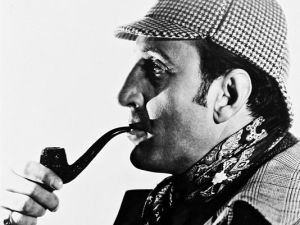 I know my friends and fellow GAD enthusiasts are champing at the bit to tell me their own gambits. Feel free, with appropriate spoiler warnings. I would suggest that a “gambit” per se is something that’s used in more than one book and by more than one author, but I’ll be interested to know your thoughts. If I’ve gone wrong, feel free to say so. And if you have a better title for one of my gambits, I’d love to hear it!!
I know my friends and fellow GAD enthusiasts are champing at the bit to tell me their own gambits. Feel free, with appropriate spoiler warnings. I would suggest that a “gambit” per se is something that’s used in more than one book and by more than one author, but I’ll be interested to know your thoughts. If I’ve gone wrong, feel free to say so. And if you have a better title for one of my gambits, I’d love to hear it!!
 I had a small stroke of luck a few weeks ago and found a handful of Patricia Wentworth titles in a charity shop that included a couple of my personal favourites; it seemed like an opportune time for some re-reading and reconsideration.
I had a small stroke of luck a few weeks ago and found a handful of Patricia Wentworth titles in a charity shop that included a couple of my personal favourites; it seemed like an opportune time for some re-reading and reconsideration. My most recent re-reading of The Chinese Shawl produced a somewhat different thought pattern than my usual pleasant nostalgia, though, and I wanted to share it with you. Essentially I realized that over the years in my mind I have developed a kind of idealized mystery novel template in the back of my mind; something against which I hold up Golden Age mysteries and see where they fail to live up to my hoped-for experience. But when it occurred to me that I had never really tried to determine what that idealized mystery novel looked like, I knew I had the beginnings of an article for you.
My most recent re-reading of The Chinese Shawl produced a somewhat different thought pattern than my usual pleasant nostalgia, though, and I wanted to share it with you. Essentially I realized that over the years in my mind I have developed a kind of idealized mystery novel template in the back of my mind; something against which I hold up Golden Age mysteries and see where they fail to live up to my hoped-for experience. But when it occurred to me that I had never really tried to determine what that idealized mystery novel looked like, I knew I had the beginnings of an article for you.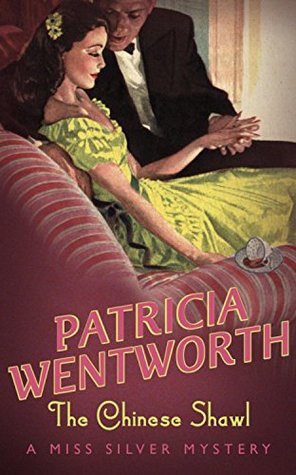 What is this novel about?
What is this novel about? Laura also meets one of the many young men in Tanis Lyle’s orbit, the handsome young airman Carey Desborough, who is recovering from a crash and may not be able to fly again. Carey was once engaged to Tanis but she broke it off. As frequently happens in Wentworth novels, Carey and Laura fall immediately in love and are clearly on their way to the altar, but Tanis decides that, no, she hadn’t broken off the engagement after all.
Laura also meets one of the many young men in Tanis Lyle’s orbit, the handsome young airman Carey Desborough, who is recovering from a crash and may not be able to fly again. Carey was once engaged to Tanis but she broke it off. As frequently happens in Wentworth novels, Carey and Laura fall immediately in love and are clearly on their way to the altar, but Tanis decides that, no, she hadn’t broken off the engagement after all. The house has other inhabitants; the full-time dwellers are Agnes’s dull and dumpy cousin Lucy (chapter 4 starts off with a genealogical chart for anyone unable to follow the familial relationships), and Agnes’s long-time maid Perry and other staff, but there is a wing full of wartime evacuees and another house guest — Miss Silver, an old school-friend of Lucy and Agnes. Tanis has created a house party full of anxiety and jealousy among many of her suitors and their current romantic partners (when she re-announces her engagement to Carey, which is merely a ploy for this poisonous young woman to get her own way); when Tanis’s ex-husband shows up and makes a scene, the tension levels are raised even higher.
The house has other inhabitants; the full-time dwellers are Agnes’s dull and dumpy cousin Lucy (chapter 4 starts off with a genealogical chart for anyone unable to follow the familial relationships), and Agnes’s long-time maid Perry and other staff, but there is a wing full of wartime evacuees and another house guest — Miss Silver, an old school-friend of Lucy and Agnes. Tanis has created a house party full of anxiety and jealousy among many of her suitors and their current romantic partners (when she re-announces her engagement to Carey, which is merely a ploy for this poisonous young woman to get her own way); when Tanis’s ex-husband shows up and makes a scene, the tension levels are raised even higher. At this point the official investigation begins under Superintendent Randal March, who had once been a schoolboy under Miss Silver’s tutelage. I’ll go more deeply into the details below, but essentially a number of suspects present themselves to the attention of the police. Some are excellent suspects, like the crazy ex-husband; some are merely obvious, like a few couples whom Tanis was splitting up by “taking” the male, apparently merely for practice. And then a number of primary characters are more or less equally under suspicion, with no known motive.
At this point the official investigation begins under Superintendent Randal March, who had once been a schoolboy under Miss Silver’s tutelage. I’ll go more deeply into the details below, but essentially a number of suspects present themselves to the attention of the police. Some are excellent suspects, like the crazy ex-husband; some are merely obvious, like a few couples whom Tanis was splitting up by “taking” the male, apparently merely for practice. And then a number of primary characters are more or less equally under suspicion, with no known motive.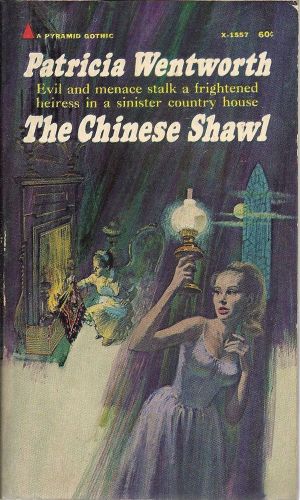 Why is this novel worth your time?
Why is this novel worth your time? So in chapter 39 the blackmailing maid is killed by a shadowy figure, and immediately after in chapter 40 Laura hears and surprises Agnes Fane in the act of walking around the house. In chapter 41, dull cousin Lucy comes to rouse Laura yet again, because Agnes has had some sort of health crisis and Lucy needs help getting her a doctor without letting anyone know (because these sorts of things should be kept in the family). Lucy babbles on to Laura about the night Tanis was murdered, and the reader is increasingly convinced that Lucy is not quite saying outright that Agnes shot Tanis in mistake for Laura. And since this fits the plot so far, we don’t quite know what’s coming next but we expect that Agnes will have to pay for her crimes.
So in chapter 39 the blackmailing maid is killed by a shadowy figure, and immediately after in chapter 40 Laura hears and surprises Agnes Fane in the act of walking around the house. In chapter 41, dull cousin Lucy comes to rouse Laura yet again, because Agnes has had some sort of health crisis and Lucy needs help getting her a doctor without letting anyone know (because these sorts of things should be kept in the family). Lucy babbles on to Laura about the night Tanis was murdered, and the reader is increasingly convinced that Lucy is not quite saying outright that Agnes shot Tanis in mistake for Laura. And since this fits the plot so far, we don’t quite know what’s coming next but we expect that Agnes will have to pay for her crimes. It’s actually a cheat, since at no previous time has Wentworth remarked that Lucy is short-sighted. She has noted, though, that Lucy reads a lot of thrillers and tries to act like she doesn’t, so perhaps that is hint enough.
It’s actually a cheat, since at no previous time has Wentworth remarked that Lucy is short-sighted. She has noted, though, that Lucy reads a lot of thrillers and tries to act like she doesn’t, so perhaps that is hint enough. Well, there is something here that I only find among the best-constructed mysteries — and it’s the reason I had to abandon spoilers and Tell All, in order to get this across. Essentially there is an underlying structure in this book where the physical facts and actions of the characters combine to produce a puzzle; but all the physical facts and actions of the characters share a kind of thematic bond. The book is “about” something.
Well, there is something here that I only find among the best-constructed mysteries — and it’s the reason I had to abandon spoilers and Tell All, in order to get this across. Essentially there is an underlying structure in this book where the physical facts and actions of the characters combine to produce a puzzle; but all the physical facts and actions of the characters share a kind of thematic bond. The book is “about” something. I have to say, as a reader I find this kind of mystery to be a very satisfying reading experience. I look for thematic echoes like this in mysteries and very frequently do not find them, although they are the everyday stuff of what I term “literary fiction”. Even more interesting to me is the idea that these echoes result in a mystery plot that grows out of character and not mechanical necessity.
I have to say, as a reader I find this kind of mystery to be a very satisfying reading experience. I look for thematic echoes like this in mysteries and very frequently do not find them, although they are the everyday stuff of what I term “literary fiction”. Even more interesting to me is the idea that these echoes result in a mystery plot that grows out of character and not mechanical necessity. I’m not saying I dislike Chinese Orange, by the way, just that I much prefer it when a mystery has some element of … psychological necessity, if you will. I like detective novels even more when they contain an attention to detail such that every sub-plot contains the same thematic element. Here, people’s lives worsen when they interfere with romantic relationships, or their own romantic relationship is damaged or broken. Not only are Tanis and Agnes and Laura and Carey all affected by the broken engagement 20 years ago, husbands who dally with Tanis get suspected of murder by their wives, and vice versa. The puzzle is not as difficult as Chinese Orange but there is a good balance between plot and characterization here, and I enjoy that.
I’m not saying I dislike Chinese Orange, by the way, just that I much prefer it when a mystery has some element of … psychological necessity, if you will. I like detective novels even more when they contain an attention to detail such that every sub-plot contains the same thematic element. Here, people’s lives worsen when they interfere with romantic relationships, or their own romantic relationship is damaged or broken. Not only are Tanis and Agnes and Laura and Carey all affected by the broken engagement 20 years ago, husbands who dally with Tanis get suspected of murder by their wives, and vice versa. The puzzle is not as difficult as Chinese Orange but there is a good balance between plot and characterization here, and I enjoy that. The other day, I published
The other day, I published  The third in my unbroken sequence of children in mysteries occurred when I picked up a copy of The Widow’s Cruise, a 1959 novel by the great Nicholas Blake. I provided a very brief biography of this writer some years back
The third in my unbroken sequence of children in mysteries occurred when I picked up a copy of The Widow’s Cruise, a 1959 novel by the great Nicholas Blake. I provided a very brief biography of this writer some years back 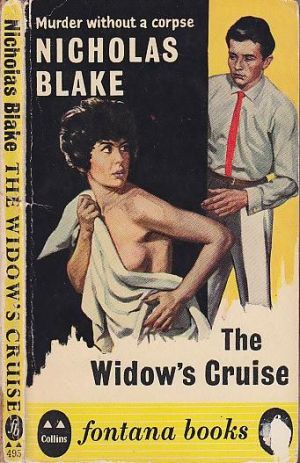 One of the other passengers is a teenage girl who attended the girls’ school where the bitter academic had taught until her breakdown; Faith and her brother are eager to snap at the heels of the former schoolteacher, who is withdrawn and unpleasant. Also in conflict with Ianthe is the scholar Jeremy Street, who is leading the “Greek history” part of the tour aboard the Menelaos; Ianthe’s last rational act before her breakdown appears to have been to publish a scathing review of Street’s scholarship.
One of the other passengers is a teenage girl who attended the girls’ school where the bitter academic had taught until her breakdown; Faith and her brother are eager to snap at the heels of the former schoolteacher, who is withdrawn and unpleasant. Also in conflict with Ianthe is the scholar Jeremy Street, who is leading the “Greek history” part of the tour aboard the Menelaos; Ianthe’s last rational act before her breakdown appears to have been to publish a scathing review of Street’s scholarship. But it’s not teenage Faith who aroused my dislike; it’s another fellow passenger who is very little seen in the book but leaves an indelible impression. Little Primrose Chalmers, aged about nine, is the child of two psychoanalysts and her hobby appears to be spying on her fellow passengers and writing things down in a notebook. This unpleasant child contradicts her elders, doesn’t appear to realize when people don’t want her around, and appears to regard her fellow passengers as analytic subjects rather than adults to whom one should be respectful. Things build rapidly to a head and one afternoon, after a shore excursion during which Ianthe disappears, missing and presumed dead, Primrose is found face-down in the swimming pool and her notebook is missing. Apparently she saw or heard the wrong thing at the wrong time.
But it’s not teenage Faith who aroused my dislike; it’s another fellow passenger who is very little seen in the book but leaves an indelible impression. Little Primrose Chalmers, aged about nine, is the child of two psychoanalysts and her hobby appears to be spying on her fellow passengers and writing things down in a notebook. This unpleasant child contradicts her elders, doesn’t appear to realize when people don’t want her around, and appears to regard her fellow passengers as analytic subjects rather than adults to whom one should be respectful. Things build rapidly to a head and one afternoon, after a shore excursion during which Ianthe disappears, missing and presumed dead, Primrose is found face-down in the swimming pool and her notebook is missing. Apparently she saw or heard the wrong thing at the wrong time.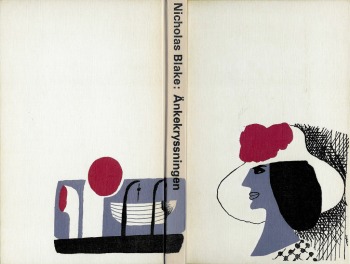 Just imagining what it must be like to be trapped on a cruise ship with a child spying on you — let alone under circumstances productive of sexual dalliance, over-indulgence in food and drink, bitter arguments with persons on board from one’s past, and scholarly infighting — it all sounds very unpleasant to me. I’m not suggesting that Primrose deserved to be killed, that’s not fair to say at all about a child, but … how shall I put this? … the experienced mystery reader is not truly surprised.
Just imagining what it must be like to be trapped on a cruise ship with a child spying on you — let alone under circumstances productive of sexual dalliance, over-indulgence in food and drink, bitter arguments with persons on board from one’s past, and scholarly infighting — it all sounds very unpleasant to me. I’m not suggesting that Primrose deserved to be killed, that’s not fair to say at all about a child, but … how shall I put this? … the experienced mystery reader is not truly surprised. For the most part, this is really more a character study than anything else. Blake does a wonderful job of making us see bitter Ianthe and her less than virtuous sister Melissa, the pouty teenage Faith, the pompous but wounded Jeremy Street, and even the minor characters like a Bishop and his wife whom Nigel befriends, and the Greek cruise director, the greasy and highly-sexed Nikolaides. As you reach the conclusion of the book you will realize that you have actually been fooled by a complex and very deliberate plot, and that you have been given a large number of clues as to what actually happened — and you’ve overlooked or misinterpreted most of them.
For the most part, this is really more a character study than anything else. Blake does a wonderful job of making us see bitter Ianthe and her less than virtuous sister Melissa, the pouty teenage Faith, the pompous but wounded Jeremy Street, and even the minor characters like a Bishop and his wife whom Nigel befriends, and the Greek cruise director, the greasy and highly-sexed Nikolaides. As you reach the conclusion of the book you will realize that you have actually been fooled by a complex and very deliberate plot, and that you have been given a large number of clues as to what actually happened — and you’ve overlooked or misinterpreted most of them. What I enjoyed most about The Widow’s Cruise was the quality of the writing, which is head and shoulders above Blake’s contemporaries. The prose is elegant and intelligent, the plot is tidy and masterful, and the characterization, as I said, is the strongest point. Just a pleasure to read something this well-written, where intelligence leaks through the pores, as it were. I’m prepared to sacrifice a couple of Primroses for a book this smart and engaging.
What I enjoyed most about The Widow’s Cruise was the quality of the writing, which is head and shoulders above Blake’s contemporaries. The prose is elegant and intelligent, the plot is tidy and masterful, and the characterization, as I said, is the strongest point. Just a pleasure to read something this well-written, where intelligence leaks through the pores, as it were. I’m prepared to sacrifice a couple of Primroses for a book this smart and engaging.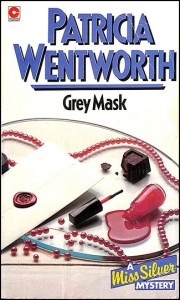 And so I turn from a child who was a victim to a child who ought to have been a victim, as I mentioned yesterday. Grey Mask, a 1929 novel by
And so I turn from a child who was a victim to a child who ought to have been a victim, as I mentioned yesterday. Grey Mask, a 1929 novel by  However, this is Miss Silver’s first outing, and honestly I suspect it was nearly her last. It took nearly ten years for the author to create a second Miss Silver novel and there were well more than a dozen non-series novels in the interval. I think it’s clear that Miss Silver got re-worked a little bit in the interval. She’s more aggressive here, less self-effacing, and, if you’ll pardon a more modern metaphor for this antique character, she’s more in your face. It’s the only book in the entire series where Miss Silver is heard to speak using contractions.
However, this is Miss Silver’s first outing, and honestly I suspect it was nearly her last. It took nearly ten years for the author to create a second Miss Silver novel and there were well more than a dozen non-series novels in the interval. I think it’s clear that Miss Silver got re-worked a little bit in the interval. She’s more aggressive here, less self-effacing, and, if you’ll pardon a more modern metaphor for this antique character, she’s more in your face. It’s the only book in the entire series where Miss Silver is heard to speak using contractions. Grey Mask comes from a more antique tradition, and one that will not be well known nearly a century later. Essentially this comes from a style of novel that asks the reader to believe that (a) there is a secret society devoted to a large-scale cause, usually political, personal, or financial gain; (b) the people involved in this secret society wear masks at their meetings so that they won’t recognize each other if they meet mask-less; and (c) innocent and brave young people, frequently with troubled romantic lives, are constantly getting mixed up with these societies and bringing them to an unpleasant end. Indeed, you may have already read one of these (Agatha Christie’s 1929 novel,
Grey Mask comes from a more antique tradition, and one that will not be well known nearly a century later. Essentially this comes from a style of novel that asks the reader to believe that (a) there is a secret society devoted to a large-scale cause, usually political, personal, or financial gain; (b) the people involved in this secret society wear masks at their meetings so that they won’t recognize each other if they meet mask-less; and (c) innocent and brave young people, frequently with troubled romantic lives, are constantly getting mixed up with these societies and bringing them to an unpleasant end. Indeed, you may have already read one of these (Agatha Christie’s 1929 novel,  So in 1929, when this was written, I suspect it may have been about the final point in time in which the reader was meant to take this seriously. This book, like all such books, chronicles the involvement of an innocent young person with the masked secret society; the innocent person decides that s/he is going to find out just what’s going on and do the job that the police cannot. Here it is Charles Moray, who four years ago had his engagement broken by the beautiful Margaret Langton. He travels the world, trying to forget (yes, the book is pretty much at this level of cliche) and upon his return he finds out that Margaret is a member of a masked secret society that is … blackmailing people? It’s not absolutely clear. But any clandestine meeting of people where everyone gets a mask and a number has got to be more than vaguely criminal. So Charles decides to take on Grey Mask, the leader of the group, and win back Margaret.
So in 1929, when this was written, I suspect it may have been about the final point in time in which the reader was meant to take this seriously. This book, like all such books, chronicles the involvement of an innocent young person with the masked secret society; the innocent person decides that s/he is going to find out just what’s going on and do the job that the police cannot. Here it is Charles Moray, who four years ago had his engagement broken by the beautiful Margaret Langton. He travels the world, trying to forget (yes, the book is pretty much at this level of cliche) and upon his return he finds out that Margaret is a member of a masked secret society that is … blackmailing people? It’s not absolutely clear. But any clandestine meeting of people where everyone gets a mask and a number has got to be more than vaguely criminal. So Charles decides to take on Grey Mask, the leader of the group, and win back Margaret. Meanwhile, and this is what brought this so unfavourably to my attention, a new character arrives. Margot Standing is approximately 18 years old, fresh from a European finishing school, and the beautiful blonde daughter and heir of a wealthy shipping magnate who was recently lost at sea. There’s a lot of money at stake and Grey Mask has his/her eyes on controlling Margot’s inheritance, so plans begin to take shape.
Meanwhile, and this is what brought this so unfavourably to my attention, a new character arrives. Margot Standing is approximately 18 years old, fresh from a European finishing school, and the beautiful blonde daughter and heir of a wealthy shipping magnate who was recently lost at sea. There’s a lot of money at stake and Grey Mask has his/her eyes on controlling Margot’s inheritance, so plans begin to take shape. So that’s half the plot right there; Margot charms everyone. The remainder consists of Margot doing things that are unimaginably stupid and to the immediate benefit of Grey Mask and the group of conspirators, and then Margaret and Charles quite obviously falling in love all over again (but first, of course, he has to find out why she jilted him). And there’s a small percentage about Miss Silver acting rather in the role of private investigator Paul Drake from the Perry Mason series, whose job it is to pop up every now and then and provide information about who lives where and what they did last night. Miss Silver actually does save the day at the end, after some moderately surprising plot developments, and rescues Margaret and Charles from their imprisonment in a soundproof cellar. You will not be surprised to know that Grey Mask is someone who has not previously given any signs of the ability to be the mastermind of a powerful criminal organization — and has been fooling everyone for years.
So that’s half the plot right there; Margot charms everyone. The remainder consists of Margot doing things that are unimaginably stupid and to the immediate benefit of Grey Mask and the group of conspirators, and then Margaret and Charles quite obviously falling in love all over again (but first, of course, he has to find out why she jilted him). And there’s a small percentage about Miss Silver acting rather in the role of private investigator Paul Drake from the Perry Mason series, whose job it is to pop up every now and then and provide information about who lives where and what they did last night. Miss Silver actually does save the day at the end, after some moderately surprising plot developments, and rescues Margaret and Charles from their imprisonment in a soundproof cellar. You will not be surprised to know that Grey Mask is someone who has not previously given any signs of the ability to be the mastermind of a powerful criminal organization — and has been fooling everyone for years. I suppose for me Margot was the sticking point. Frankly, if you have a plot that allows you the freedom to have just about anyone — passers-by, delivery boys, taxi drivers, waiters — be in the pay of your secret society, you don’t need the active cooperation of your victim in walking directly into every trap in sight. Similarly if you’re trying to keep Margot disguised and out of the hands of the secret society, it doesn’t help that she lets her secret slip to every man who talks to her politely for five minutes. She is a fifth wheel in the budding re-romance of Margaret and Charles, she eats all Margaret’s food and can’t afford to replace it, and is constantly gushing about how fabulous all the men in sight are and whether they are romantically interested in her. In later decades and milieux she might have found herself a preppy, bon chic bon genre, or a Sloane Ranger. But in this volume she’s a pompous little Valley Girl before her time. It’s unpleasant to consider that a wealthy man would have left his daughter so completely unequipped to meet the exigencies of modern life; her idea of work is apparently asking her father’s lawyer to give her money. And I rather think this is the kind of person the Communists wanted to stand up against a wall and shoot; I’m somewhat more sympathetic now.
I suppose for me Margot was the sticking point. Frankly, if you have a plot that allows you the freedom to have just about anyone — passers-by, delivery boys, taxi drivers, waiters — be in the pay of your secret society, you don’t need the active cooperation of your victim in walking directly into every trap in sight. Similarly if you’re trying to keep Margot disguised and out of the hands of the secret society, it doesn’t help that she lets her secret slip to every man who talks to her politely for five minutes. She is a fifth wheel in the budding re-romance of Margaret and Charles, she eats all Margaret’s food and can’t afford to replace it, and is constantly gushing about how fabulous all the men in sight are and whether they are romantically interested in her. In later decades and milieux she might have found herself a preppy, bon chic bon genre, or a Sloane Ranger. But in this volume she’s a pompous little Valley Girl before her time. It’s unpleasant to consider that a wealthy man would have left his daughter so completely unequipped to meet the exigencies of modern life; her idea of work is apparently asking her father’s lawyer to give her money. And I rather think this is the kind of person the Communists wanted to stand up against a wall and shoot; I’m somewhat more sympathetic now. So Margot is carrying the weight of the plot and just cannot stand up to it. If you find yourself unable to countenance Margot, as I was unable, then you will not enjoy this book very much since it’s pretty clear what’s going to happen from the outset. The day will indeed be saved, the lovers will reunite, and the villain will be killed while trying to escape. I did have a moment’s pleasure thinking of what Miss Silver might have made of this lazy nitwit as a governess but I think Miss Silver would have more sense than to waste her effort. There is not much here but the bare bones of what Miss Silver would become in the future; she’s the only person in the book I wanted more from.
So Margot is carrying the weight of the plot and just cannot stand up to it. If you find yourself unable to countenance Margot, as I was unable, then you will not enjoy this book very much since it’s pretty clear what’s going to happen from the outset. The day will indeed be saved, the lovers will reunite, and the villain will be killed while trying to escape. I did have a moment’s pleasure thinking of what Miss Silver might have made of this lazy nitwit as a governess but I think Miss Silver would have more sense than to waste her effort. There is not much here but the bare bones of what Miss Silver would become in the future; she’s the only person in the book I wanted more from. Patricia Wentworth made the error of introducing repellent children at least once more; Vanishing Point, from 1953, features a young girl who is simultaneously an invalid and a plucky young thing with dreams of becoming an author. The result may leave the reader needing insulin because of a sugar overdose. But I haven’t heard anything from most of my regular commenters about other awful children in detective fiction. Does no one remember the xiphopagous twins from Ellery Queen‘s The Siamese Twin Mystery? The impossibly perfect offspring of Lieutenant Mendoza in the works of Dell Shannon? Horrible little Billy and Jackie from Queen’s The Tragedy of Y? Agatha Christie is full of them: the Girl-Guide-aged taxi dancer in Christie’s The Body in the Library, or Hallowe’en Party, with two repellent little girls (one sweet, one sour); the little ballerina in Crooked House, or the pudgy and unpleasant victim in Dead Man’s Folly; Pippa Hailsham-Brown from Spider’s Web or Linda Marshall from Evil Under The Sun. That creepy little group in Margery Allingham‘s The Mind Readers; brats in Erle Stanley Gardner‘s TCOT Empty Tin, Deadly Toy and Spurious Spinster — and that’s just with thinking about it for ten minutes. There’s possibly a long series here!!
Patricia Wentworth made the error of introducing repellent children at least once more; Vanishing Point, from 1953, features a young girl who is simultaneously an invalid and a plucky young thing with dreams of becoming an author. The result may leave the reader needing insulin because of a sugar overdose. But I haven’t heard anything from most of my regular commenters about other awful children in detective fiction. Does no one remember the xiphopagous twins from Ellery Queen‘s The Siamese Twin Mystery? The impossibly perfect offspring of Lieutenant Mendoza in the works of Dell Shannon? Horrible little Billy and Jackie from Queen’s The Tragedy of Y? Agatha Christie is full of them: the Girl-Guide-aged taxi dancer in Christie’s The Body in the Library, or Hallowe’en Party, with two repellent little girls (one sweet, one sour); the little ballerina in Crooked House, or the pudgy and unpleasant victim in Dead Man’s Folly; Pippa Hailsham-Brown from Spider’s Web or Linda Marshall from Evil Under The Sun. That creepy little group in Margery Allingham‘s The Mind Readers; brats in Erle Stanley Gardner‘s TCOT Empty Tin, Deadly Toy and Spurious Spinster — and that’s just with thinking about it for ten minutes. There’s possibly a long series here!!
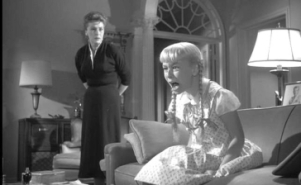
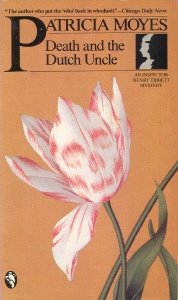 This started when I picked up an old volume of Patricia Moyes that I dimly remembered having read 20 or 30 years ago; Death and the Dutch Uncle (1968). I read most of Moyes’s novels about Inspector Henry Tibbett of Scotland Yard and his charming wife Emmy when they were brought out in a uniform paperback edition in the early 80s by Henry Holt (see left); I’ve written about her first novel
This started when I picked up an old volume of Patricia Moyes that I dimly remembered having read 20 or 30 years ago; Death and the Dutch Uncle (1968). I read most of Moyes’s novels about Inspector Henry Tibbett of Scotland Yard and his charming wife Emmy when they were brought out in a uniform paperback edition in the early 80s by Henry Holt (see left); I’ve written about her first novel  Then I hit the character of little Ineke de Jong, a Dutch child who is “eight and a half” and the grand-daughter of an important character, and the whole book came back to me with a rush. She is pushy, arrogant, demanding, and has “rosy cheeks, china-blue eyes, and flaxen hair tied with two blue ribbons …”. Her presence in the novel as a character is designed, I think, to allow various bad guys the chance to put pressure on her grandfather. I expect it’s entirely possible that many people would regard this precocious and aggressive child as being charming and cute; I can’t think of anyone I’d try to get away from faster.
Then I hit the character of little Ineke de Jong, a Dutch child who is “eight and a half” and the grand-daughter of an important character, and the whole book came back to me with a rush. She is pushy, arrogant, demanding, and has “rosy cheeks, china-blue eyes, and flaxen hair tied with two blue ribbons …”. Her presence in the novel as a character is designed, I think, to allow various bad guys the chance to put pressure on her grandfather. I expect it’s entirely possible that many people would regard this precocious and aggressive child as being charming and cute; I can’t think of anyone I’d try to get away from faster. This is a bit of a self-indulgent book in more than this way. As is evident from many of her other books, Moyes liked to write about European locations and, frankly, she usually does it well. She has a nice way of giving you knowledge without making you think you should have brought a guidebook along. Apparently there is something that she found charming about the Netherlands, both urban and rural; the urban part was fine, but her take on the countryside was saccharine and kind of insulting. There’s a moment where three elderly Dutch bumpkins misunderstand Henry that is not quite pleasant to read even though it’s supposed to be comical. Moyes is also kind of condescending about the general level of intelligence of London-based petty criminals and doesn’t find much to like about hotel staff either — these are two major threads in the early part of the book. And in a move that might have seemed cute and meta (but given the level of grumpiness that had already been provoked in me by little Ineke I found merely annoying), Moyes has represented Henry’s police contact in the Dutch force as being
This is a bit of a self-indulgent book in more than this way. As is evident from many of her other books, Moyes liked to write about European locations and, frankly, she usually does it well. She has a nice way of giving you knowledge without making you think you should have brought a guidebook along. Apparently there is something that she found charming about the Netherlands, both urban and rural; the urban part was fine, but her take on the countryside was saccharine and kind of insulting. There’s a moment where three elderly Dutch bumpkins misunderstand Henry that is not quite pleasant to read even though it’s supposed to be comical. Moyes is also kind of condescending about the general level of intelligence of London-based petty criminals and doesn’t find much to like about hotel staff either — these are two major threads in the early part of the book. And in a move that might have seemed cute and meta (but given the level of grumpiness that had already been provoked in me by little Ineke I found merely annoying), Moyes has represented Henry’s police contact in the Dutch force as being  So I ploughed through to the end and, yes, it was just as annoying as I’d remembered. Henry and Emmy perform feats of courage and athleticism that are perhaps somewhat beyond the norm. The story line is complicated by people who perform criminal acts of needless complexity and extent, and Ineke (of course) gets kidnapped with Emmy. Everyone is saved, the young lovers are reunited, and there’s an epilogue that neatly ties off all the loose ends. Nothing here is really what I’d call a mystery, it’s more like the sedentary middle-aged version of a light espionage novel. Three out of ten; most of her others are better.
So I ploughed through to the end and, yes, it was just as annoying as I’d remembered. Henry and Emmy perform feats of courage and athleticism that are perhaps somewhat beyond the norm. The story line is complicated by people who perform criminal acts of needless complexity and extent, and Ineke (of course) gets kidnapped with Emmy. Everyone is saved, the young lovers are reunited, and there’s an epilogue that neatly ties off all the loose ends. Nothing here is really what I’d call a mystery, it’s more like the sedentary middle-aged version of a light espionage novel. Three out of ten; most of her others are better.
 The plot finds Alleyn and his family traveling in Roqueville, France because Alleyn has unaccountably decided that he can better investigate the origins of a narcotics ring while trailing his wife and child. Ridiculous, of course, but necessary to the story. Troy, his wife, wants to visit a local cousin, the oddly-behaved P. E. Garbel. As they travel to Roqueville by train, a coincidence occurs that is downright miraculous; a blind flies up at just the right moment and Alleyn witnesses what appears to be a murder in the very chateau he seeks to investigate in connection with the drug ring. In another astonishing coincidence, one of the Alleyn family’s fellow train passengers (one of the titular spinsters) needs an emergency operation for appendicitis and all the other doctors in the area are at a conference (don’t you hate when that happens?). Dr. Baradi, one of the leaders of a witchcraft cult headquartered at the Chateau of the Silver Goat, must perform the operation. And yes, the plotting is just as ruthlessly utilitarian as I’m making it sound. If something is interfering with Alleyn getting involved with the witchcraft cult, whoosh, away it goes, on the headlong way to Act II.
The plot finds Alleyn and his family traveling in Roqueville, France because Alleyn has unaccountably decided that he can better investigate the origins of a narcotics ring while trailing his wife and child. Ridiculous, of course, but necessary to the story. Troy, his wife, wants to visit a local cousin, the oddly-behaved P. E. Garbel. As they travel to Roqueville by train, a coincidence occurs that is downright miraculous; a blind flies up at just the right moment and Alleyn witnesses what appears to be a murder in the very chateau he seeks to investigate in connection with the drug ring. In another astonishing coincidence, one of the Alleyn family’s fellow train passengers (one of the titular spinsters) needs an emergency operation for appendicitis and all the other doctors in the area are at a conference (don’t you hate when that happens?). Dr. Baradi, one of the leaders of a witchcraft cult headquartered at the Chateau of the Silver Goat, must perform the operation. And yes, the plotting is just as ruthlessly utilitarian as I’m making it sound. If something is interfering with Alleyn getting involved with the witchcraft cult, whoosh, away it goes, on the headlong way to Act II. The chateau is filled with drug addicts of the upper levels of British and French society; one of Troy’s fellow painters, a raddled movie star whose career is on the downhill slide, the cult’s other leader Mr. Oberon, a pair of brainless but nice young Brits (Robin and Ginny), etc. Among these cultists are a couple of rather odd spinsters, to make the title work. Everyone lies around all day in a stupor induced by the overuse of cannabis, to which they are all “addicted” (hereabouts it appears to have qualities much like heroin). Very shortly after Alleyn first investigates the chateau, little Ricky is kidnapped. Through an exhibition of … I’ll call it astonishingly intuitive police work, Alleyn rescues his son with the assistance of a local chauffeur, Raoul, and Raoul’s fiancee, the voluptuous and faintly moustached Teresa.
The chateau is filled with drug addicts of the upper levels of British and French society; one of Troy’s fellow painters, a raddled movie star whose career is on the downhill slide, the cult’s other leader Mr. Oberon, a pair of brainless but nice young Brits (Robin and Ginny), etc. Among these cultists are a couple of rather odd spinsters, to make the title work. Everyone lies around all day in a stupor induced by the overuse of cannabis, to which they are all “addicted” (hereabouts it appears to have qualities much like heroin). Very shortly after Alleyn first investigates the chateau, little Ricky is kidnapped. Through an exhibition of … I’ll call it astonishingly intuitive police work, Alleyn rescues his son with the assistance of a local chauffeur, Raoul, and Raoul’s fiancee, the voluptuous and faintly moustached Teresa. Meanwhile the book has been building to Act III in which the witchcraft cult is going to spend Friday night getting hopped up on marijuana and sacrificing the one virgin left in the building; Ginny, the youngest spinster of all. You will not be surprised to learn that Alleyn penetrates the witch cult and reveals his presence at the most dramatic moment possible; he solves a murder, proves who’s behind the narcotics ring, and rescues everyone who needs to be rescued.
Meanwhile the book has been building to Act III in which the witchcraft cult is going to spend Friday night getting hopped up on marijuana and sacrificing the one virgin left in the building; Ginny, the youngest spinster of all. You will not be surprised to learn that Alleyn penetrates the witch cult and reveals his presence at the most dramatic moment possible; he solves a murder, proves who’s behind the narcotics ring, and rescues everyone who needs to be rescued. There’s a lot to dislike about this book, I found. The helpful locals, Raoul and Teresa, are “simple peasant types” and while it’s not overly emphasized, it’s clear that they’re in the book as comic relief; their language is nowhere near as hilarious as Marsh seems to think. The drug ring, as I’ve noted before with Marsh, is ridiculously conceived. It just doesn’t seem very sensible to try to camouflage a heroin factory by running it out of a crumbling chateau where you sacrifice virgins on the weekends; someone is bound to notice something, you know? The masterminds, for whom the penalties for their crimes may include death, are remarkably unwilling to confront or challenge Alleyn and rely upon kidnapping little Ricky at an early stage of proceedings — to give him something to worry about. If there’s anything more designed to draw attention to your operation than kidnapping the son of the detective investigating you, I cannot imagine what it might be (it would have to involve fireworks LOL). And it’s actually unpleasant to think that Inspector Alleyn could allow his family and especially his extremely vulnerable child to be involved with a den of Satanist drug dealers. I mean, come on. The kid gets kidnapped and rescued and the family still hangs around. This story requires more suspension of disbelief than a bungee jump.
There’s a lot to dislike about this book, I found. The helpful locals, Raoul and Teresa, are “simple peasant types” and while it’s not overly emphasized, it’s clear that they’re in the book as comic relief; their language is nowhere near as hilarious as Marsh seems to think. The drug ring, as I’ve noted before with Marsh, is ridiculously conceived. It just doesn’t seem very sensible to try to camouflage a heroin factory by running it out of a crumbling chateau where you sacrifice virgins on the weekends; someone is bound to notice something, you know? The masterminds, for whom the penalties for their crimes may include death, are remarkably unwilling to confront or challenge Alleyn and rely upon kidnapping little Ricky at an early stage of proceedings — to give him something to worry about. If there’s anything more designed to draw attention to your operation than kidnapping the son of the detective investigating you, I cannot imagine what it might be (it would have to involve fireworks LOL). And it’s actually unpleasant to think that Inspector Alleyn could allow his family and especially his extremely vulnerable child to be involved with a den of Satanist drug dealers. I mean, come on. The kid gets kidnapped and rescued and the family still hangs around. This story requires more suspension of disbelief than a bungee jump. Little Ricky, as you can imagine, represents one of the reasons I’ve never had children. I actually do think Ngaio Marsh is a writer of considerable skill and intelligence, and she has a great deal of ability to make the reader see her characters as people. I believe that she is showing Ricky as a six-year-old, subject to the emotions and reactions of a child — and it’s that that I don’t like about this book. Marsh is working hard to make this child appealing and realistic and what it makes me want to do is close the book, pour myself a Scotch, and go confirm the restrictive covenant with my condo management company that guarantees no children and no pets. The child is chatty, follows his parents around like a homing pigeon, and requires constant reassurance about nearly everything in his environment, like a recently housebroken cocker spaniel. Now, to be fair, he actually gets kidnapped and might be expected to be a bit needy upon his return. But Ricky’s is the kind of anxiety that shows up whenever Marsh wants to make Troy and Alleyn look like good parents; when the action truly starts, he’s conveniently and thoroughly asleep. (And he’s only six, but he’s absorbed the British principle of the stiff upper lip.) If I had found myself stranded with the Alleyn family in that situation, by the hundredth repetition of “Why, mummy?” I would have joined the witchcraft cult and sacrificed Ricky.
Little Ricky, as you can imagine, represents one of the reasons I’ve never had children. I actually do think Ngaio Marsh is a writer of considerable skill and intelligence, and she has a great deal of ability to make the reader see her characters as people. I believe that she is showing Ricky as a six-year-old, subject to the emotions and reactions of a child — and it’s that that I don’t like about this book. Marsh is working hard to make this child appealing and realistic and what it makes me want to do is close the book, pour myself a Scotch, and go confirm the restrictive covenant with my condo management company that guarantees no children and no pets. The child is chatty, follows his parents around like a homing pigeon, and requires constant reassurance about nearly everything in his environment, like a recently housebroken cocker spaniel. Now, to be fair, he actually gets kidnapped and might be expected to be a bit needy upon his return. But Ricky’s is the kind of anxiety that shows up whenever Marsh wants to make Troy and Alleyn look like good parents; when the action truly starts, he’s conveniently and thoroughly asleep. (And he’s only six, but he’s absorbed the British principle of the stiff upper lip.) If I had found myself stranded with the Alleyn family in that situation, by the hundredth repetition of “Why, mummy?” I would have joined the witchcraft cult and sacrificed Ricky. My next two lucky dips I’ll chronicle
My next two lucky dips I’ll chronicle 






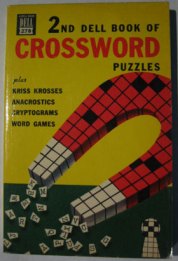











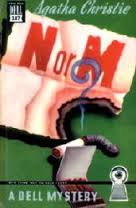













![NSY S1E4.avi_snapshot_01.27_[2013.06.29_00.42.49]](https://hypnoticmysteries.files.wordpress.com/2015/01/nsy-s1e4-avi_snapshot_01-27_2013-06-29_00-42-49.jpg?w=300&h=228)
















